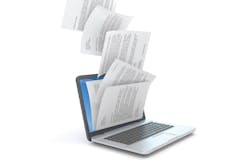I resisted management software for a long time for a few reasons.
First, there was the cost. I was told my monthly bill (from the same company I already used for estimating software) would almost double. Ouch. Wasn’t I already paying enough just for the estimating software?
Second, it would require more time. I had experimented with some management software years earlier and it took a lot of extra time. The biggest time waster seemed to be keying in estimates that were written in other estimating software platforms. It was a tedious, line-by-line copying of an estimate that someone else wrote in another system.
Lastly, I would have to abandon the simple systems I had put in place. I liked my simple systems! I was proud of them. I had grown them from the ground up, improving them year after year. They provided all of the structure and data I needed to grow my business for nearly 10 years. But overnight they would become obsolete. I was abandoning the horses that got me this far.
Earlier this year, in spite of all the costs, extra work, and letting go of my cherished processes, I decided to take the plunge. Do I regret it? On some days, yes. On most days, no. It was a necessary part of our evolution.
But it was not easy and it is certainly not for everyone.
Here are some pros and cons from my experience so far:
PROS
• Faster, more accurate data. Our shop is transitioning from an organization run by instincts and hunches to being run by instincts tested by the data. Reports that used to take hours to gather into a spreadsheet from reams and reams of paper are now literally one keystroke away.
• Benchmarking. With more accurate data coupled with industry statistics, I can see at a glance how we compare to other shops and find areas both to celebrate and improve.
• Accountability. Every transaction, from writing an estimate, to capturing a job, to receiving a payment, is visible at all times.
• Communication and clarity. Knowing which department a car is in and the projected out date of every vehicle has made communicating with customers easier. Previously, our production manager handled almost all of those calls in person. Now, anyone with access to the management software can give an accurate update.
• Closing gaps on our goals. We can quickly analyze data related to our sales and cycle time goals. Literally with the click of a button, I can see how we are doing on a single job, or all of the jobs for a week. I can analyze trends over months. With accurate information, strategic adjustments can be made to close those gaps on our goals.
CONS
• The system is only as good as the data entered. And it can take a long time to enter data. It can feel like an interruption to an already busy day to enter the data. And you may be entering data that does not directly affect the areas you are in charge of managing. Point being: It takes extra time and effort, and the payoff is not always immediate for the person entering the data.
• Keying in estimates. This is along the lines of entering data, yet this deserves a bullet point of its own. This has proven to be a very time-consuming, often frustrating reality of our daily work. But if it is not done properly, it can throw off everything. This is especially true of accounting. If the labor hours don’t match or the part prices don’t align, you will only get skewed data that might lead to inaccurate decisions. Of course, there are tricks and shortcuts that can be learned over time. It’s also something that gets easier the more you do it.
• Big learning curve and not a lot of support. The best way to learn is from a person who has mastered the system, and then have them work alongside the team for a number of weeks. This is simply not possible, though. We were given a few ramp-up webinars and then a trainer for a couple of days. While the webinars and trainer were excellent in our case, we still felt disoriented and in the dark for a few weeks as we integrated the system into our daily routines.
All in all, it was absolutely worth the sacrifices as we had outgrown the paper-based systems developed in our early days and needed access to more and better data. The challenge is knowing when that time is right for you.




